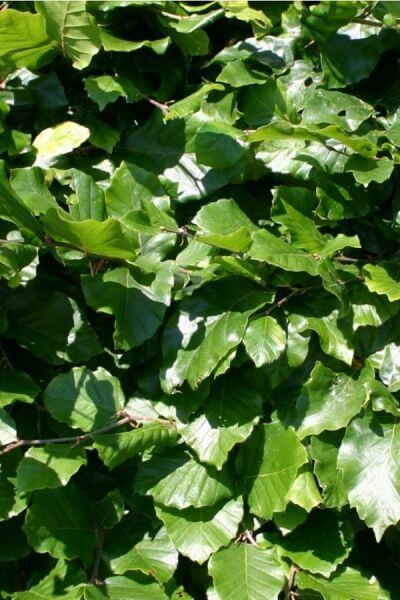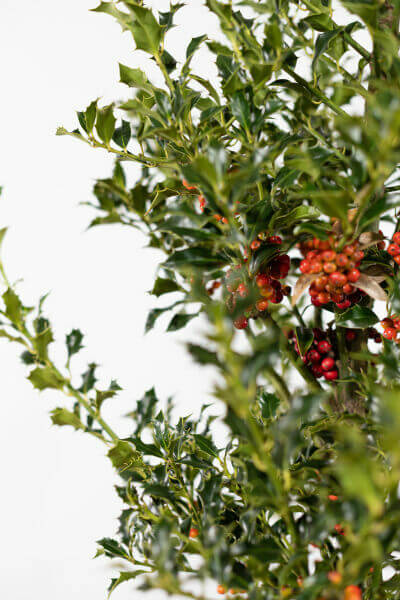Hedge Plants For Creative Landscaping
Enhance your garden's allure with rich hedge varieties such as Yew (Taxus), Thuja, Laurel, Photinia, and Bamboo, celebrated for their structural integrity and environmental benefits.
Yew and Thuja supply evergreen coverage and winter season resilience, while Laurel provides rapid development and broad, fragrant leaves.
Photinia includes seasonal charm with its dynamic red foliage, and Bamboo provides a low-maintenance, serene ambiance.
These hedges enhance air quality, lower noise, and produce tranquil, private areas.
Proper planting, spacing, and maintenance guarantee energetic growth and environmental consistency.
Check out how these lush varieties can elevate your garden's charm and well-being.
Secret Takeaways
Change Your Garden With Lush Hedge Varieties
- Select Yew for its dense, evergreen development and unequaled longevity.
- Select Laurel for its fast growth and broad leaves, making sure fast personal privacy.
- Choose Photinia for its vibrant seasonal foliage, which turns a striking dark red.
- Utilize Bamboo for a low-maintenance, winter-hardy hedge with aesthetic appeal.
- Space plants 2-3 per meter and prune routinely for optimum development and health.
Popular Hedge Plants
When transforming a garden with lush hedge varieties, it's vital to consider popular hedge plants such as Yew, Thuja, Laurel, and Photinia due to their special characteristics and advantages.
Yew (Taxus) is highly respected for its longevity and thick, green growth, making it a prime choice for sustaining landscapes.
Thuja is noted for its evergreen foliage and robust winter season resilience.
Photinia adds seasonal vibrancy with red leaves that darken over time, creating vibrant visual appeal.
Laurel uses quick development and aromatic, broad leaves, perfect for fast privacy.
Additionally, Bamboo is an outstanding choice for ambiance, using a low-maintenance, winter-hardy alternative that improves the garden's aesthetic with its stylish, swaying canes.
These choices deal with a range of horticultural requirements and preferences.
Benefits of Garden Hedges
Garden hedges use a plethora of advantages, making them a valuable addition to any landscape. These natural barriers are cost-effective to carry out and offer considerable wind protection, boosting air flow and contributing to sound reduction. The thick foliage of hedges like Thuja and Beech guarantees privacy by blocking presence, producing a secluded and serene environment.
Hedges likewise play a vital role in microclimate guideline, offering a steady environment that promotes plant growth and lessens temperature variations. Their elaborate leaf structures filter contaminants, enhancing air quality and adding to a much healthier garden ecosystem.
Additionally, hedges excel in sound reduction, taking in and deflecting acoustic waves to lower ambient noise levels. This double performance of offering both visual and acoustic personal privacy enhances the total tranquility and aesthetic appeal of any garden.
Planting and Upkeep Tips
For a successful hedge, precise preparation of the planting location is crucial. Guarantee the soil has proper pH and drainage to support strong root advancement.
Area the plants appropriately for the chosen types. Water the hedge frequently during its preliminary development stage, changing as needed with seasonal changes.
Carry out a systematic bug control and disease avoidance technique, utilizing chemical or natural treatments when required. Frequently check for aphids, mites, and fungal infections.
Apply mulch to retain moisture and suppress weeds. Seasonal pruning promotes thick development and air blood circulation, necessary for plant health.
Following these guidelines will help you cultivate a vibrant, well-kept hedge that boosts the appeal of your garden.
Spacing and Cutting Standards
Spacing and Cutting Standards
Correct spacing and cutting are vital for cultivating healthy, aesthetically appealing hedges. Appropriate spacing makes sure each plant gets enough nutrients, light, and air flow.
Follow these standards for optimum hedge upkeep:
- Spacing: Position hedge plants 2-3 plants per meter to motivate robust growth.
- Pruning Methods: Regular pruning is important for maintaining desired hedge height and shape. Trim new development in summer season and cut down older wood during winter.
- Seasonal Care: Adjust cutting approaches and schedules according to seasonal requirements to make sure plant health.
- Hedge Height: Routinely screen and trim to keep the wanted hedge height and accomplish uniform visual appeals.
Sticking to these steps will guarantee your hedge prospers, improving both the appeal and functionality of your garden.
Picking the Right Hedge
Selecting the Right Hedge
Selecting the proper hedge includes evaluating aspects such as fully grown height, Article source foliage density, and environmental strength. Effective hedge plant selection needs understanding each types' growth characteristics and site-specific versatility.
For example, Yew (Taxus) offers excellent longevity and thick growth, while Thuja is significant for its winter strength. Furthermore, considering upkeep requirements is crucial; fast-growing types like Laurel or Privet demand regular cutting, whereas low-maintenance choices like Bamboo or Ivy may be more suitable for those looking for minimal maintenance.
Environmental elements such as soil type, light schedule, and moisture conditions need to also direct the choice process. This cautious technique ensures the picked hedges will thrive, offering both visual and functional advantages to the garden landscape.
Delivery and Planting Recommendations
To guarantee your hedge plants flourish, they must be provided by specialized couriers and planted quickly upon arrival.
Follow these necessary actions for successful planting:
- Soil Preparation: Enhance the soil with natural matter to enhance drainage and nutrient content.
- Planting Depth: Produce a trench two times the width and equivalent to the depth of the root ball.
- Watering Strategies: Water thoroughly after planting, keeping the soil consistently damp but not filled.
- Mulching: Use a layer of mulch to maintain wetness and suppress weeds.
Customer Support and Service
Given the essential function of prompt support in horticultural pursuits, our consumer assistance group is readily available 6 days a week through telephone, email, and social media to offer expert guidance and quickly deal with any concerns. Their commitment to quick response times ensures customer complete satisfaction by dealing with inquiries associated with plant health, ideal planting methods, and maintenance schedules.

Within 24 hours
This detailed support group, enhanced by a stellar 9.3/ 10 customer rating, highlights our commitment to improving the gardening experience for each client.
Often Asked Questions
For How Long Does It Consider Hedge Plants to Establish?
Hedge plants typically require one to three years to become completely established, with the exact duration varying by types and growing conditions.
Reliable care throughout this important duration is vital for robust development. Consistent watering, watchful weed control, and appropriate fertilizer application are pivotal in promoting strong root development.
For instance, fast-growing types like Laurel might establish quicker, while slower-growing ranges such as Yew might take longer. Diligent maintenance speeds up the facility process, resulting in healthy and thick hedges.
What Are the Finest Hedge Plants for Privacy?
The question of the finest hedge plants for personal privacy involves evaluating evergreen and deciduous options.
Evergreen hedges like Thuja, Laurel, and Cypress supply year-round protection, ensuring constant personal privacy.
In contrast, deciduous hedges such as Beech offer seasonal personal privacy, shedding leaves in chillier months.
Key upkeep ideas for privacy hedges include routine trimming, fertilizing in spring, and correct spacing-- usually 2 to 3 plants per meter.
Additionally, constant watering and persistent weed removal are important for promoting healthy, dense development.
Can Hedge Plants Bring In Wildlife to My Garden?
Yes, hedge plants can attract wildlife to your garden by supplying vital benefits like shelter, food, and nesting websites, thus enhancing regional biodiversity. For example, yew, holly, and laurel are exceptional for drawing in birds, while ivy supports a range of insects.
Nevertheless, it is very important to note that there are some downsides, such as increased maintenance to handle bugs and regular maintenance. Carefully choosing and keeping hedge varieties can assist stabilize these benefits and disadvantages, eventually cultivating a vibrant and sustainable environment in your garden.
Are There Any Flowering Hedge Plants Available?
Yes, there are flowering hedge plants readily available that can boost the beauty of your garden.
For instance, Elaeagnus, likewise called Olive Willow, produces fragrant white flowers in the fall, adding a touch of beauty.
Photinia, another popular option, showcases vibrant red leaves that mature into a rich green, producing a vibrant visual result throughout the seasons.
To ensure these plants flourish, it's important to practice correct pruning techniques and seasonal maintenance, such as trimming new growth in the summertime and cutting down in the winter season.
These procedures will assist keep the health and visual appeal of your flowering hedges.
How Do I Prevent Pests in My Hedge Plants?
To prevent pests in hedge plants, employ natural pest control methods and maintain proper hedge care. Introduce advantageous insects like ladybugs, which take advantage of hazardous pests, to create a balanced ecosystem.
Regularly inspect your hedges for signs of infestation and promptly remove any afflicted parts to avoid the spread. Guarantee the health of your hedges by applying balanced fertilizers and providing adequate water.
Make use of mulching to maintain soil wetness and appropriate spacing to decrease plant stress and promote robust development. These practices jointly help in reducing pest concerns and keeping a healthy hedge.
Conclusion
In essence, selecting the right hedge ranges such as Yew, Thuja, and Laurel can change any garden into a relaxing haven. These plants supply year-round plant, improve aesthetic appeal, and deal practical advantages like sound reduction and wind defense.
Appropriate planting methods, precise spacing, constant watering, and seasonal trimming are essential for ideal growth.
Reliable shipment services and professional consumer support ensure a smooth experience from purchase to planting, making it simpler than ever to raise your outdoor area.
Garden hedges offer a plethora of benefits, making them an important addition to any landscape. These natural barriers are affordable to carry out and offer substantial wind security, boosting air flow and contributing to sound reduction. The thick foliage of hedges like Thuja and Beech ensures personal privacy by blocking exposure, developing a remote and serene environment.

Pruning Strategies: Routine pruning is important for maintaining wanted hedge height and shape. Trim new development in summer and cut back older wood throughout winter season.